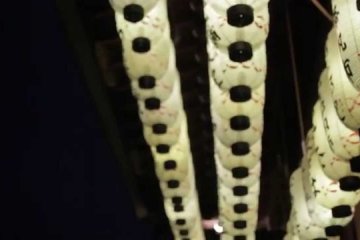
ศาลเจ้ายะซะกะในเวลากลางคืน
Michael Williamsขณะที่ศาลเจ้าส่วนใหญ่จะปิดกันในเวลากลางคืน ศาลเจ้ายะซะกะ (Yasaka) ในเกียวโตจะเปิดอยู่ตลอดเวลา และเมื่อเปิดในเวลากลางคืน ศาลเจ้าจะจุดโคมไฟสว่างไสวทำให้เป็นภาพที่สดใสงดงามในศูนย์กลางของกิออน (Gion)

The Yasaka Cry, located in the Gion district in Kyoto, is often referred to as the Gion Shrine. The shrine is one of the most famous shrines in the city of Kyoto and is located at the end of Shijo-dori Street.
The grounds of the shrine include several buildings and gates. Including the main hall and also a stage.
Every year, Yakasa Shrine hosts numerous events and festivals that are important to the Japanese and is a popular destination for many visitors to Kyoto City.
The Yasaka Shrine respects the gods Susanoo-no-mikoto, Kushiinadahime-no-mikoto, and Yahashira-no-mikogami. Above all, Susanoo-no-mikoto is an important god in Japanese mythology, known for his victory over Yamata-no-orochi (a great serpent with eight heads: a symbol of numerous disasters).
Yasaka Shrine is about a 5-minute walk from Gion Shijo Station on the Keihan Line; alternatively, it can be reached by an 8-minute walk from Kawaramachi Station on the Hankyu Line.

ขณะที่ศาลเจ้าส่วนใหญ่จะปิดกันในเวลากลางคืน ศาลเจ้ายะซะกะ (Yasaka) ในเกียวโตจะเปิดอยู่ตลอดเวลา และเมื่อเปิดในเวลากลางคืน ศาลเจ้าจะจุดโคมไฟสว่างไสวทำให้เป็นภาพที่สดใสงดงามในศูนย์กลางของกิออน (Gion)
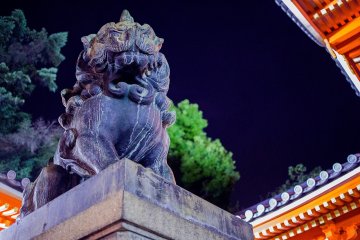
หลังจากพระอาทิตย์ตกดินไปแล้ว สิ่งลี้ลับได้ปรากฎตัวในใจกลางศาลเจ้ายะสะกะ (Yasaka) ศาลเจ้าที่เป็นสัญลักษณ์ของกิออน และกวักมือเชิญชวนผู้คนที่เดินผ่านไปมา ให้เข้าไปสัมผัสประสบการณ์ที่ยากจะลืมเลือน
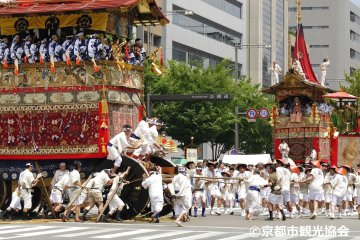
กิออน มัตซึตริ เป็นงานเทศกาลที่ยิ่งใหญ่ที่สุดของเมืองเกียวโต ซึ่งจะมีขึ้นในช่วงเดือนกรกฏาคมที่ศาลเจ้ายะสะกะ

อีกเทศกาลหนึ่งซึ่งเป็นที่รู้จักน้อยกว่า มีชื่อว่าเทศกาลชินโก เทศกาลนี้จัดขึ้นเย็นวันเดียวกับกิออนมัตสุริในวันที่ 17 กรกฎาคม เกี้ยวหามขนาดใหญ่ 3 หลังถูกหามจากศาลเจ้ายาซากะแล้วแห่ไปรอบเมือง เกี้ยวเหล่านี้เป็นตัวแทนของเทพเจ้าที่มีความเกี่ยวข้องกับเทศกาลกิออนอย่าง ใกล้ชิด ร่วมเฉลิมฉลองเทศกาลนี้ไปกับฝูงชนนับพัน ๆ คน
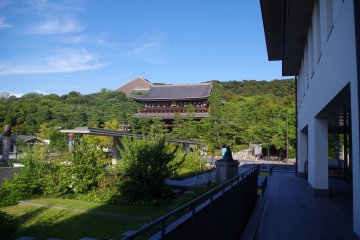
โรงแรมชิออนอิน วาจุนไคคุนอยู่ในบริเวณอันสงบของเกียวโตที่ที่คุณสามารถพักผ่อนและผ่อนคลายทั้งร่างกายและจิตใจของคุณ

แจม โฮสเทล เกียวโตย่านกิออนตั้งอยู่ใจกลางเมือง เป็นมิตรกับนักเดินทาง เดินทางไปเที่ยว, ช้อปปิ้งและเที่ยวกลางคืนสะดวกสบาย
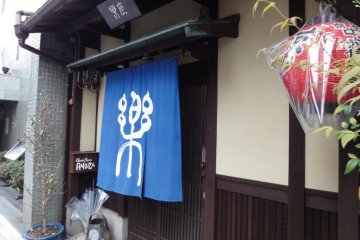
บ้านเกอิชาอายุ 100 ปีในกิออน (Gion) ได้ถูกดัดแปลงมาเป็นเกสต์เฮ้าส์ที่มีเสน่ห์ มีห้องพักสไตล์ดั้งเดิม รอบๆ สวนญี่ปุ่น
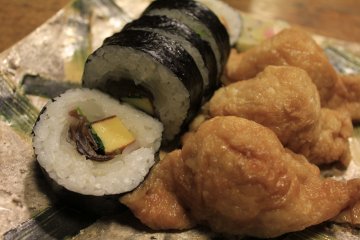
อร่อยกับซูชิสไตล์เกียวโตแท้ดั้งเดิมที่ไม่ต้องการซอสโชยุเลยแม้แต่น้อย
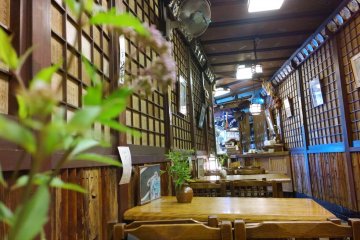
IZUJU SHUSHI (いづ重) ลิ้มรสซูชิสไตล์เกียวโตแท้ๆ ที่คงความอร่อยในตำรับเฉพาะตัวมากว่า 100 ปี

อยู่ไม่ไกลจากศาลเจ้ายะสะกะ-จินจา ร้านอุด้ง มิมิโกะอุเป็นร้านบะหมี่เล็กๆ ราคาถูก มีอาหารที่อิ่มอร่อยให้เลือกมากมาย
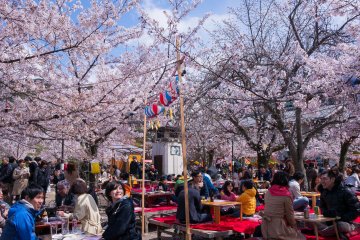
Maruyama Park is the oldest public park in Kyoto and a popular springtime cherry blossom viewing spot. It opened in 1886 and is located next to Yasaka Shrine in Higashiyama District. The park was laid out by the well-known gardening expert Ogawa Jibee (1860–1933). As it is one of the most popular places for hanami in Kyoto, it can get quite crowded during the high season in April. The main attraction of the park is a beautiful weeping cherry that is illuminated at night. In the southwest of the park is the Chorakukan Villa, which the Japanese tobacco king Murai Kichibee had built. This property is now used as a hotel.

Kodaiji (高台寺) is located northeast of the Yasaka Hokanji Temple at the foot of the Higashiyama Ryozen Mountains in Kyoto. The official name of the temple is Kodaiji-Jushozenji Temple. In 1606, the temple of Kita-no-Mandokoro was dedicated in memory of her late husband. Kita-no-Mandokoro was also known as nene. The Kaisando (Founder's Hall), Otama-ya (Sanctuary), Kasatei (Tea House), Shiguretei (Tea House), Omotetmon (Gate to the Sanctuary), and Kangetsudai (Moon Viewing Pavilion) are designated as important cultural assets in Japan. The temple garden is said to have been designed by the landscape gardener Kobori Enshu (1579-1647). The Japanese government has designated the garden as a historic site and a place of scenic beauty. The interior of the main building was originally painted with lacquer and covered with exquisite gold decorations. However, the current building was rebuilt in 1912 after several fires. Kodai-ji hosts modern art exhibitions in spring and fall. These are set up in the rock garden in front of Houjyo and are creatively illuminated at night.
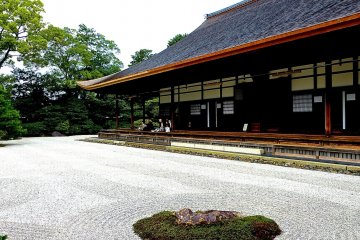
Kennin-ji is a historic Zen Buddhist temple in Higashiyama, Kyoto, Japan, near Gion, at the end of Hanami Lane. It is considered to be one of the so-called Kyoto Gozan or "five most important Zen temples of Kyoto". [Wikipedia]